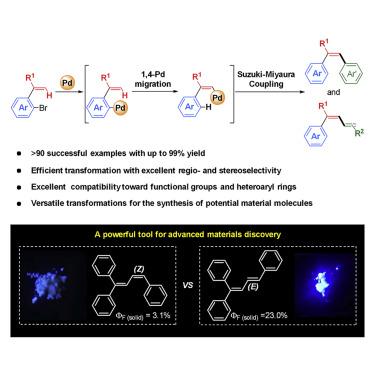In a thrilling showdown at the Volleyball World tournament, Japan secured a remarkable victory against Argentina, fueled by an electrifying comeback led by standout player Miyaura. Overcoming early setbacks, Japan’s relentless determination and tactical prowess turned the tide in a match that kept fans on the edge of their seats. This hard-fought win not only highlights Japan’s growing prominence on the international volleyball stage but also underscores Miyaura’s pivotal role in steering his team to success against a formidable Argentine squad.
Miyaura’s Tactical Brilliance Ignites Japan’s Resurgence Against Argentina
Yuji Miyaura’s strategic ingenuity was the catalyst for Japan’s stunning turnaround against Argentina, showcasing a masterclass in perseverance and tactical adaptability. Facing a daunting deficit in the opening sets, Miyaura’s decision-making on the court shifted the momentum decisively. His keen ability to read the Argentinian defense allowed Japan to exploit openings through well-timed serves and quick attacks, which revitalized the team’s offensive rhythm. The infusion of energy within the Japanese side under his guidance disrupted Argentina’s flow and forced errors at critical junctures.
The match’s defining moments were punctuated by Miyaura’s precision and leadership, inspiring teammates to elevate their performance. Key factors contributing to the comeback included:
- Adaptive serving strategy that targeted weaknesses in Argentina’s line-up.
- Decisive block and counterattack formations that stemmed Argentina’s scoring runs.
- Enhanced court communication that empowered defensive coordination and transition plays.
| Set | Japan Points | Argentina Points | Miyaura’s Key Stat |
|---|---|---|---|
| 1 | 18 | 25 | 2 Aces |
| 2 | 20 | 25 | 3 Blocks |
| 3 | 25 | 22 | 5 Successful Attacks |
| 4 | 26 | 24 | 4 Runs of Service Pressure |
| 5 | 15 | 13 | Match-Winning Spike |
Key Moments That Turned the Tide in Japan’s Thrilling Volleyball Victory
Japan’s resilience shone brightest during the third set when the momentum seemed to slip away against a relentless Argentine side. Miyaura’s strategic serving streak, which included two aces and a crucial block, ignited the crowd and shifted the psychological edge firmly to Japan. His ability to read Argentina’s attack, coupled with a sequence of precise spikes from the flanks, halted Argentina’s dominant run and forced multiple errors from their key hitters. This burst of energy sparked a furious comeback, transforming a precarious 15-19 deficit into a commanding 23-19 lead.
Key defensive maneuvers underpinned Japan’s turnaround, with libero Yamamoto delivering several diving saves that kept the team in play during critical junctures. The synchronization between setter Tanaka and outside hitters created unpredictable offensive strikes, challenging Argentina’s block formations. The following table summarizes the pivotal statistics from the final two sets, highlighting how Japan’s performance metrics surged as the match neared its climax:
| Set | Serve Aces | Blocks | Attack Efficiency | Reception % |
|---|---|---|---|---|
| 3rd Set | 4 | 3 | 58% | 85% |
| 4th Set | 3 | 5 | 65% | 88% |
Strategies for Sustaining Momentum in High-Pressure International Matches
When the clock counts down and the stakes skyrocket, teams must draw upon a unique blend of mental fortitude and tactical precision to maintain their edge. Japan’s incredible resurgence against Argentina demonstrated how crucial clear communication and adaptive gameplay are in high-pressure environments. Players continuously monitored momentum shifts, responding not only to the scoreboard but also to the subtle energy changes within their team and the opponent’s dynamics. This holistic awareness allowed them to stay in rhythm, transforming potential cracks into opportunities for aggressive counterattacks.
Furthermore, the coaching staff played a pivotal role in sustaining intensity by implementing real-time adjustments without disrupting the team’s flow. Substitutions were strategically timed to inject fresh energy or to reinforce defense in critical moments. Integral to this approach is a focus on maintaining composure through controlled breathing and positive reinforcement, which fortifies resilience. Key strategies included:
- Rotational tempo management: Varying pace to unsettle opponents while conserving team energy.
- Targeted encouragement: Use of verbal cues to elevate focus and morale when pressure peaks.
- Court positioning adjustments: Tactical shifts to optimize coverage and exploit opposition weaknesses.
| Strategy | Purpose | Effect on Match |
|---|---|---|
| Adaptive Serving Patterns | Break the rhythm of the opponent | Created scoring opportunities and disrupted Argentina’s reception |
| Timeout Utilization | Reset focus during critical moments | Calmed player nerves, ensuring sharper execution post-pause |
| On-Court Leadership | Maintain team morale and strategic cohesion | Kept Japan poised under pressure, fueling the comeback |
Final Thoughts
Miyaura’s outstanding performance proved pivotal in Japan’s thrilling comeback against Argentina, underscoring her status as a key player on the international stage. As Japan continues to build momentum in the tournament, this victory not only boosts their confidence but also signals their resilience and determination moving forward. Fans and analysts alike will be watching closely to see how Japan leverages this hard-fought win in their upcoming matches at Volleyball World.




